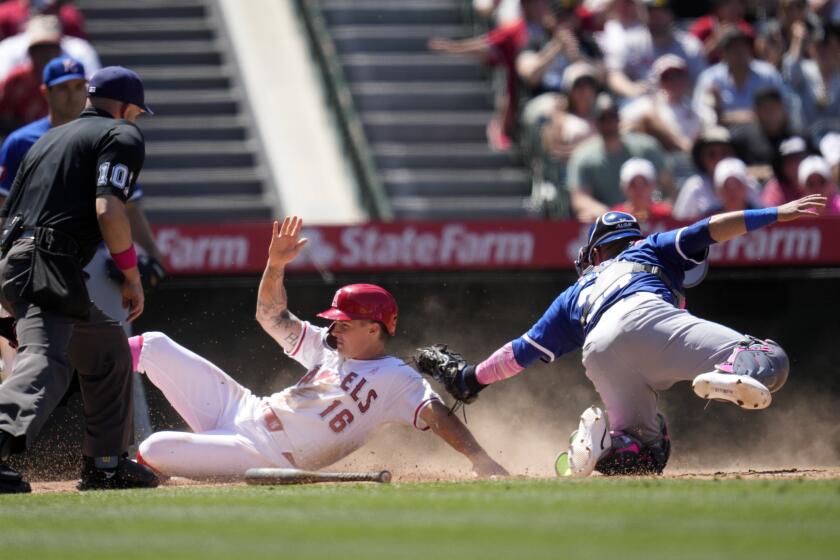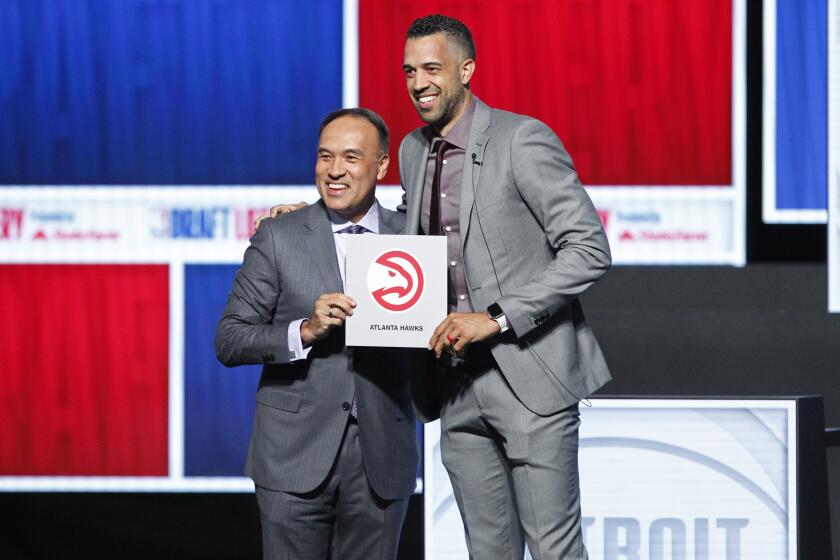There’s Cause for Alarm as Sockers Sleep Through Wake-Up Call
Adversity’s Children are at it again.
You know who is stumbling and bumbling around like a weary parent trying to put a toy together before the kids get up Christmas morning.
That’s right.
The Sockers.
These guys have been indoor soccer’s version of a boxer who doesn’t bother throwing a punch until his lip is bloody and one eye is swollen shut or a pitcher who won’t throw a strike until the bases are loaded and the count’s 3 and 0 or a football team that can’t run a play right until it is third and 43.
And they’d be cocky about it.
You know, we’ve got ‘em right where we want ‘em.
What has always been amazing is that the team capable of getting itself into so many dilemmas was the same team that was capable of getting out of them.
But the Sockers have always been that way.
When they won their first indoor title, in the old North American Soccer League, they started that season 0-4, 1-5, 2-7. It was 1981-82. In the playoffs, they did not lose a game.
That was the way it went throughout the decade, in which the Sockers won seven indoor titles.
They started 1-5 in 1982-83, needed a 13-3 stretch run in 1983-84, rallied from a three games-to-one deficit in the championship series in 1985-86, came from the same deficit in the Western Division finals in 1987-88 and stumbled off to a 2-5 start last year.
It is as if no one has bothered to tell these guys that the games in October and November and December count. Everyone else starts the season, and they leave a wake-up call for January.
It has been different in the dawn of this new decade. Here it is February, and the wake-up call has not come yet.
Indeed, these masters of the great escape have gone over the cliff once again. The difference this time seems to be that they missed that handy branch you always see in the cartoons and grabbed a dandelion instead. They may not break this fall.
What we could well be witnessing is an end to the aura and era of the Sockers’ invincibility in the Major Indoor Soccer League. The year 1990 to the Sockers could be what the year 1965 was to the New York Yankees, another dynasty that fell into hard times for a while.
The season reached its halfway point Friday night with another of those frustrating losses that have become so commonplace, 3-2, in overtime to the Tacoma Stars. That left the local heroes 11-15, last in the MISL’s Western Division and seventh overall among the MISL’s eight teams. Dallas, the division leader, is five games better.
“We’re a little further back a little later in the season,” said Waad Hirmez, a veteran of four championship seasons. “In the years before, it might have taken us 10 or 15 games to get going, but now we’re 26 games into the season. It’s not yet time to panic, but we have to be concerned because we’ve never been in this situation before.”
In other words, the Sockers are not doing their usual routine and just holding back for a run down the stretch.
“This is not a typical year,” said Branko Segota, like Hirmez a veteran of four championship seasons. “For us, it’s been one of those black sheep years where we can’t seem to get anything going. We’ve had slow starts before, but by this time we’ve always shaken it. Now’s the time for us to put it into fifth gear and go for it.”
Therein lies the question.
Do these Sockers have a fifth gear? If they don’t, what they have isn’t fast enough.
Oddly, this team actually went into the season looking like it had improved on last season’s championship team. Ron Newman, the coach, thought so. The key players were all returning and some promising new faces were being blended into the mix.
“We’re getting better goalkeeping than last year,” Newman said, “and the defense is the same, probably even better.”
This would seem to leave offense as the culprit, and statistics would seem to bear that out. The Sockers are seventh among the eight teams in goals, averaging just under four a game. The only team with fewer, St. Louis, has also surrendered the fewest.
“Before,” Segota said, “we always had by far the most talent. We could put three or four lines out there. This year, we don’t have as many of the big stars to go to. We have to break the new guys in.”
Injuries have not helped. Newman fielded his 15 healthiest players Friday night. Segota and Brian Quinn were not among them, nor were Steve Zungul, Damir Haramina and Rene Ortiz. A lot of offense was in street clothes.
However, injuries have always been a factor. Injuries are just another adversity this team has always overcome.
Thus far, this decade has been quite different.
More to Read
Get our high school sports newsletter
Prep Rally is devoted to the SoCal high school sports experience, bringing you scores, stories and a behind-the-scenes look at what makes prep sports so popular.
You may occasionally receive promotional content from the Los Angeles Times.






